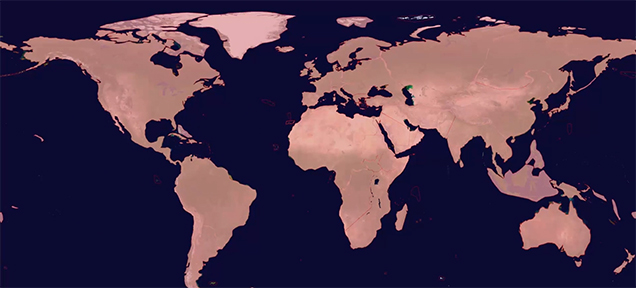The world is a very big place. Sure, satellites and the internet and, like, McDonald’s can make it seem much, much smaller now. Before all that, however, planet Earth was the great unknown with a world map that was totally incomplete.
So it’s really interesting to find out how humans discovered what places when because sometimes the history is as random as a shipwreck or as convenient as a land bridge. At other times, it’s surprising how humans found North America before they went to Portugal or got to the United Kingdom before France.
In a new video, RealLifeLore goes back in time on a map to show what places humans discovered when to find out where the last place discovered on Earth was. A lot of the big land discoveries happened thousands and thousands of years ago and it wasn’t until the Age of Exploration did all the itty-bitty islands get found — which makes sense since you could just walk around to find large continents but needed ships to find the tiny islands that pepper the ocean.
It’s inevitably surprising how late New Zealand (1250-1300 AD) and Madagascar (500 AD) was discovered given how close they are to Australia and Africa (where humans originated back in 195,000 BC). And it seems impossible, but the last place on Earth discovered by humans is Antarctica. We only spotted that ice island, which is bigger than Europe and Australia, in 1895 AD. What the hell took us so long?
